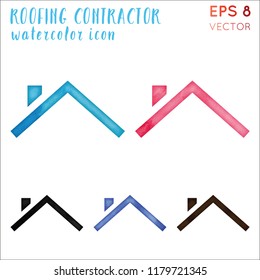Beneath The Surface Of Your Commercial Outside Paint Project Lies The Vital Duty Of Climate-- Discover Exactly How It Can Make Or Break Your Results
Beneath The Surface Of Your Commercial Outside Paint Project Lies The Vital Duty Of Climate-- Discover Exactly How It Can Make Or Break Your Results
Blog Article
Short Article Created By-Sutherland Kudsk
When you're preparing a business outside painting project, don't underestimate the effect of weather on your results. You need to think about elements like temperature, humidity, and precipitation, as they can make or damage your paint task. As an example, did you know that optimal problems call for details temperature varieties and humidity levels? Failing to check these facets can lead to unequal finishes or even damage to fresh paint. Recognizing these components is vital to accomplishing a durable, specialist end result. So, what certain climate condition should you watch out for?
Temperature Considerations
When it concerns commercial exterior paint, temperature plays an essential role in the result of your job. If you're repainting in extreme warm, the paint can dry out too promptly, resulting in issues like bad attachment and uneven coatings. You want to aim for temperature levels in between 50 ° F and 85 ° F for the very best outcomes. Below 50 ° F, paint may not heal properly, while above 85 ° F, you run the risk of blistering and breaking.
Timing your project with the right temperature levels is crucial. Beginning your work early in the early morning or later in the afternoon when it's cooler, specifically throughout warm months.
Also, consider the surface area temperature level; it can be considerably greater than the air temperature level, particularly on sunny days. Use a surface thermometer to inspect this before you start.
If temperature levels are unforeseeable, watch on the weather report. Abrupt temperature decreases or warm front can derail your strategies. You do not intend to start repainting just to have the conditions change mid-project.
Humidity Degrees
Moisture levels considerably impact the success of your industrial exterior paint job. When the moisture is too high, it can prevent paint drying out and treating, bring about a series of concerns like poor adhesion and finish top quality.
If you're intending a work throughout wet conditions, you could locate that the paint takes longer to completely dry, which can expand your job timeline and rise prices.
Alternatively, low humidity can additionally present difficulties. Paint may dry out too quickly, protecting against proper application and resulting in an irregular surface.
https://www.insider.com/interior-designer-tips-for-repainting-home-colorful-wall-murals-2021-3 'll intend to check the moisture degrees very closely to ensure you're functioning within the suitable range, generally in between 40% and 70%.
To get the most effective results, think about making use of a hygrometer to determine humidity before starting your job.
If you locate the degrees are outside the optimum array, you may need to readjust your schedule or pick paints designed for variable conditions.
Constantly speak with the maker's guidelines for certain recommendations on humidity resistance.
Rainfall Effect
Rainfall or snow can considerably disrupt your commercial exterior painting plans. When precipitation happens, it can remove fresh used paint or produce an irregular surface. Ideally, you wish to choose days with dry weather condition to guarantee the paint sticks effectively and remedies efficiently. If you're caught in a shower, it's finest to halt the job and await conditions to boost.
Additionally, snow can be a lot more detrimental. Not just does it develop a damp surface, however it can also reduce temperature levels, making it tough for paint to completely dry. https://docs.google.com/spreadsheets/d/1zjwCgZ0645gq9wBGpqNC-Ap-zd9MuOu_1azfiiECTxg/edit?gid=0#gid=0 can result in problems like peeling or blistering down the line.
It's critical to inspect the weather forecast prior to starting your project. If rainfall or snow is predicted, consider rescheduling.
Always bear in mind to allow sufficient drying time in between coats, specifically if the climate stays unforeseeable.
Conclusion
Finally, watching on the weather condition is crucial for a successful commercial external paint task. By monitoring temperature level, humidity, and precipitation, you can ensure the best conditions for application and treating. Keep in mind to intend your job around desirable climate and always adhere to producer guidelines. With the ideal approach, you'll achieve a lasting, attractive finish that can withstand the aspects. Don't let the weather capture you off-guard-- remain notified and paint smart!
